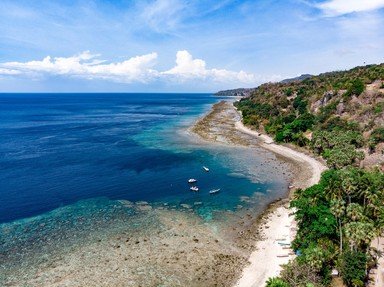Quiz Answer Key and Fun Facts
1. The Republic of Cote d'Ivoire (sometimes referred to as the Ivory Coast) is a country in the western part of the continent of Africa. On what body of water does it have a coastline?
2. Which of these countries has a land border with Cote d'Ivoire?
Hint: If you click on the image, you can see a larger version which is easier to read.
3. Which of the following is a general description of the terrain of Cote d'Ivoire?
Hint: If you click the image, it may be easier to read some relevant information.
4. What is the name of the largest lake in Cote d'Ivoire, which was created in 1973?
Hint: If you enlarge the image by clicking on it, you may be able to see some useful information.
5. The highest point of Cote d'Ivoire is also the highest point of two neighbouring countries. What is its name?
6. Cote d'Ivoire has a flag with three colors - orange, white and green - in vertical stripes. The arrangement of the colours is intended to recall the flag of the European nation which colonized Cote d'Ivoire, and left its language as the national language of the country. What is the official language of Cote d'Ivoire?
7. The coat of arms of Cote d'Ivoire includes a symbol representing one of the country's earliest economic resources. Which symbol is this?
8. Here's one for the sweet toothed members of the audience. Following independence, Cote d'Ivoire maintained its relatively (for the region) strong economy because it was able to export large quantities of coffee as well as becoming the world's leading exporter of what other product?
9. One of Cote d'Ivoire's more pressing environmental issues in the early years of the 21st century has been the result of one of its significant industries, developed since independence to help counteract the volatility of the market for its food exports. Which industry has had a dramatic impact on the landscape of Cote d'Ivoire?
10. One of the only regions of Cote d'Ivoire whose forests remain intact is the Tai National Park, located near the border with Liberia. It is home to a number of threatened mammalian species, including which of the following?
Source: Author
looney_tunes
This quiz was reviewed by FunTrivia editor
Pagiedamon before going online.
Any errors found in FunTrivia content are routinely corrected through our feedback system.

